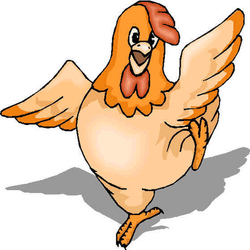Predicted Yield
The Predicted yield is the predicted amount of product you will need in the equation
Example: If you have 5 bike frames and 10 tires, 5 bikes is the predicted yield
In order to figure out the predicted yield of the product
First: Locate the limiting reagent of the first two compounds
Second: Find the Ratio between the Limiting Reagent and the Product you are looking for
Third: Multiply the limiting Reagent by the ratio
Forth: Multiply that number by the GFW of the Product you are looking for
Your answer will be in grams
You ready for an example??
Here You go
Example
Example: If you have 5 bike frames and 10 tires, 5 bikes is the predicted yield
In order to figure out the predicted yield of the product
First: Locate the limiting reagent of the first two compounds
Second: Find the Ratio between the Limiting Reagent and the Product you are looking for
Third: Multiply the limiting Reagent by the ratio
Forth: Multiply that number by the GFW of the Product you are looking for
Your answer will be in grams
You ready for an example??
Here You go
Example
For the balanced equation shown below, if 29.2 grams of C4H8S were reacted with 61.5 grams of O2, how many grams of H2O would be produced?
2C4H8S+15O2 Yields 8H2O+8CO2+2SO3
So First We need to locate the limiting Reagent
(If you forgot how to find the limiting reagent Click Here)
The Limiting Reagent is Compound 2 or O2
Second: Find the Ratio
15:8 or 1:.5333333
Third: Multiply the molarity of limiting reagent by the ratio
Which happens to be 1.921
(1.921)(.533333) ≈ 1.02453
Forth: Multiply that number by the GFW of the product in question
The GFW of H2O = 18 (If you forgot how to locate the GFW Click Here)
(1.02453)(18) ≈ 18.4415
18.4415 g of H2O will be produced
Does That Make Sense??
Lets do one more
(If you forgot how to find the limiting reagent Click Here)
The Limiting Reagent is Compound 2 or O2
Second: Find the Ratio
15:8 or 1:.5333333
Third: Multiply the molarity of limiting reagent by the ratio
Which happens to be 1.921
(1.921)(.533333) ≈ 1.02453
Forth: Multiply that number by the GFW of the product in question
The GFW of H2O = 18 (If you forgot how to locate the GFW Click Here)
(1.02453)(18) ≈ 18.4415
18.4415 g of H2O will be produced
Does That Make Sense??
Lets do one more
Explanation 2
For the balanced equation shown below, if 11.00 grams of CO were reacted with 2.71 grams of H2, how many grams of C3H8 would be produced?
For the balanced equation shown below, if 11.00 grams of CO were reacted with 2.71 grams of H2, how many grams of C3H8 would be produced?
3CO+7H2 Yields C3H8+3H2O
First: Find the Limiting Reagent
The Limiting Reagent is Compound 1 or 3CO
Second: Find the Ratio between the Limiting Reagent and the Product
3:1 or 1:1/3
Third: Multiply the molarity of the limiting reagent by the ratio
The molarity of the limiting reagent is .3928
(.3928)(1/3) ≈ .1309
Forth: multiply that number by the GFW of the product
C3H8 = 44
(.1309)(44) ≈ 5.761
5.761 grams of C3H8 will be produced
Does that Make sense??
You think you are ready for some practice problems
Click the Chicken below (8)
The Limiting Reagent is Compound 1 or 3CO
Second: Find the Ratio between the Limiting Reagent and the Product
3:1 or 1:1/3
Third: Multiply the molarity of the limiting reagent by the ratio
The molarity of the limiting reagent is .3928
(.3928)(1/3) ≈ .1309
Forth: multiply that number by the GFW of the product
C3H8 = 44
(.1309)(44) ≈ 5.761
5.761 grams of C3H8 will be produced
Does that Make sense??
You think you are ready for some practice problems
Click the Chicken below (8)

